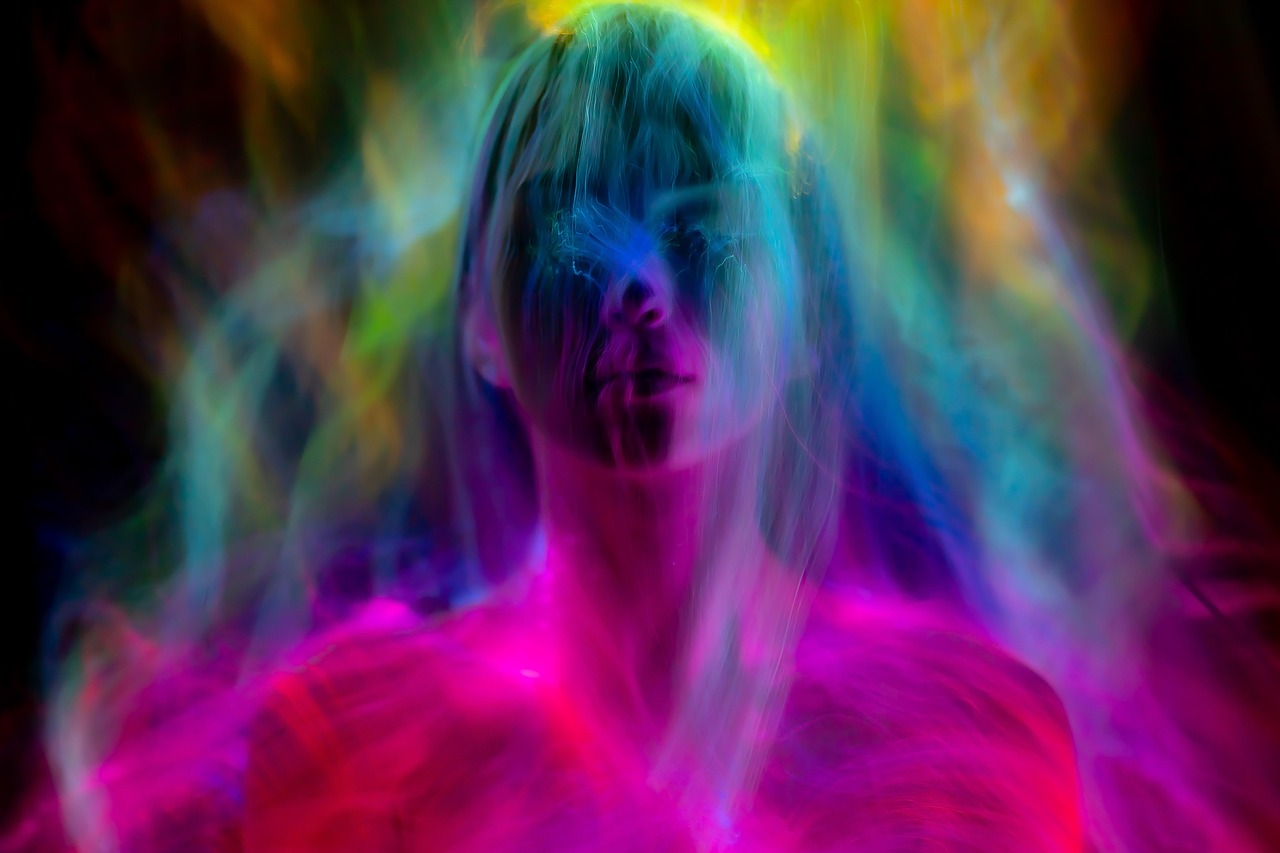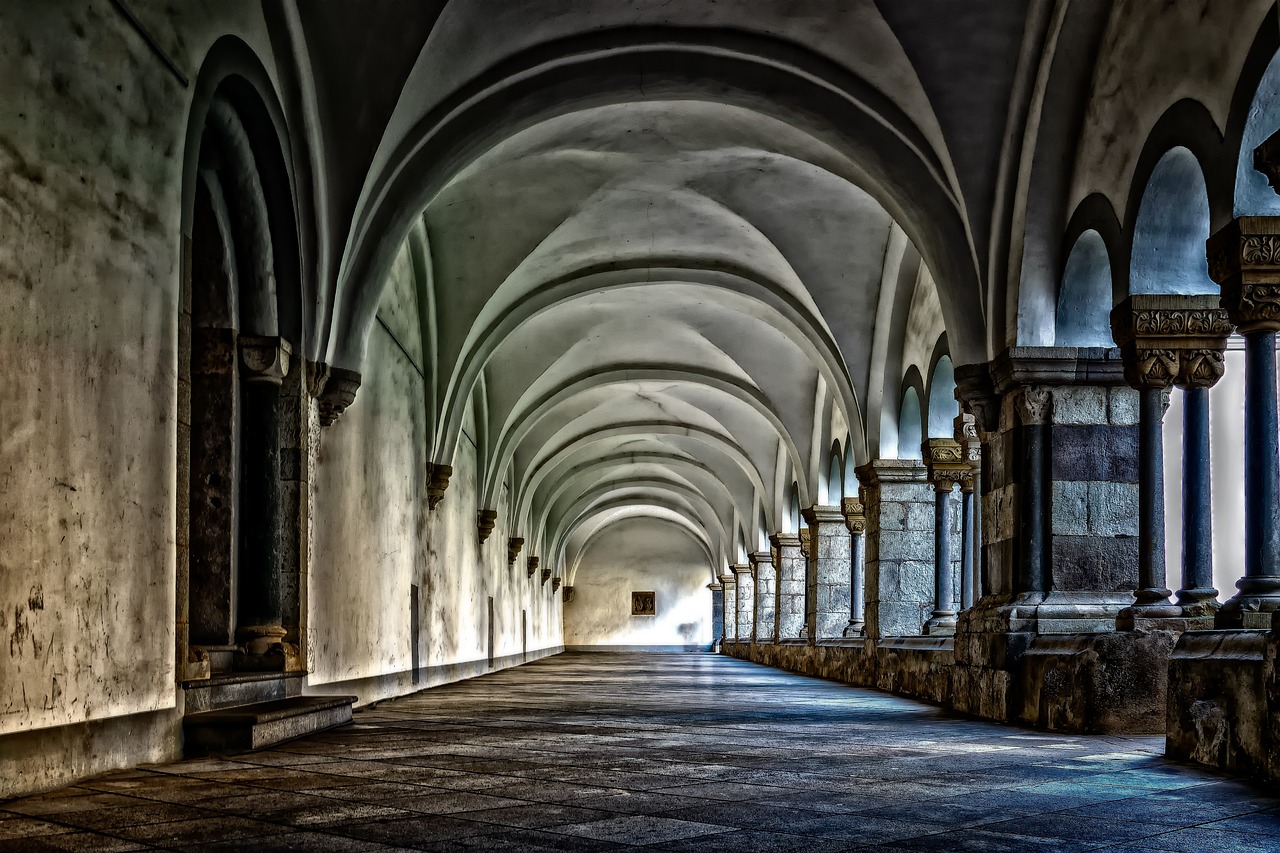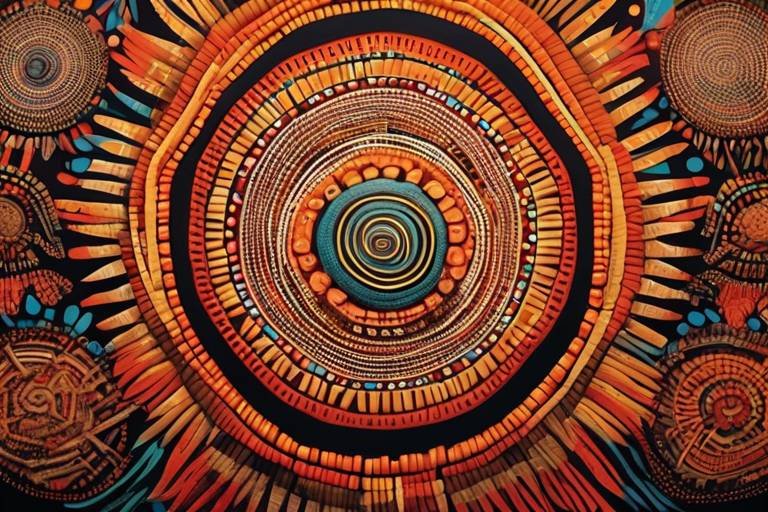The Influence of Philosophy on Artistic Expression
Philosophy and art have long been intertwined, with philosophical concepts serving as a rich source of inspiration for artists across various disciplines. The impact of philosophy on artistic expression is profound, shaping the way artists approach their craft and communicate with their audience. By delving into philosophical ideas, artists are able to explore complex themes, challenge traditional notions, and evoke deep emotional responses through their creations.
One of the key ways in which philosophy influences artistic expression is through existentialism. Existentialist philosophy, with its emphasis on individual freedom, choice, and the inherent absurdity of existence, has inspired artists to delve into themes of alienation, meaninglessness, and the search for purpose in their work. Artists often grapple with the complexities of human existence, creating thought-provoking pieces that invite viewers to reflect on their own place in the world.
Furthermore, the relationship between aesthetics and art is a central theme in the intersection of philosophy and artistic practice. Aesthetics, the branch of philosophy that deals with beauty and art, challenges artists to reconsider traditional notions of beauty and explore new forms of expression. Artists may choose to adhere to or subvert established aesthetic principles, pushing boundaries and inviting viewers to question their preconceptions about art and beauty.
Another significant aspect of the influence of philosophy on art is the consideration of ethics in artistic practices. Artists grapple with ethical dilemmas surrounding issues of representation, cultural appropriation, and the social responsibility of art. Through their work, artists have the power to provoke thought, challenge norms, and address pressing social and political issues, sparking important conversations and fostering greater understanding.
Metaphysical themes also play a crucial role in artistic expression, as artists explore concepts of reality, existence, and the nature of being through their work. By engaging with metaphysical ideas, artists invite viewers to contemplate the mysteries of life, prompting deep reflection and introspection. Art becomes a medium through which profound philosophical questions are explored and communicated, transcending language and connecting with audiences on a profound level.
As artists draw inspiration from various philosophical movements, such as Romanticism, Surrealism, and Postmodernism, they embody and respond to the philosophical ideas of their time. These movements shape artistic practices, influencing the way artists approach their work and express complex ideas and emotions. By tracing the evolution of art movements through a philosophical lens, we gain insight into the dynamic relationship between philosophy and artistic expression.
In conclusion, the influence of philosophy on artistic expression is vast and multifaceted, enriching the creative process and pushing artists to explore new frontiers of thought and emotion. Through the integration of philosophical concepts into their work, artists engage with deep existential questions, challenge aesthetic norms, and provoke ethical considerations, creating art that resonates with audiences on a profound and meaningful level.

Existentialism in Art
Existentialism in art delves into the depths of human existence, exploring the complexities of individual freedom and choice within the realm of creative expression. Artists influenced by existentialist philosophy often convey themes of alienation, absurdity, and the relentless search for meaning in their works. It's like peering into a mirror that reflects the inner turmoil and existential crises that plague the human condition.
Consider the works of artists like Edvard Munch, whose iconic painting "The Scream" encapsulates the profound sense of existential dread and isolation. The distorted figure in the painting embodies the anguish and despair felt when confronted with the overwhelming uncertainties of existence. It's a visual representation of the existential angst that permeates our consciousness.
Existentialism in art challenges conventional notions of reality and invites viewers to confront the existential questions that lie at the core of human existence. It's a philosophical journey through the complexities of life, inviting introspection and contemplation on the meaning of our individual and collective experiences.
Artists inspired by existentialist philosophy often use their creative endeavors as a means of grappling with the inherent absurdity of existence. Through their art, they navigate the complexities of human emotions, relationships, and the perpetual quest for authenticity in a world fraught with uncertainty and ambiguity.
Existentialism in art serves as a powerful reminder of the existential dilemmas we face as conscious beings, urging us to confront the fundamental questions of existence and embrace the inherent freedom and responsibility that come with being human.

Aesthetics and Art
When delving into the realm of aesthetics and art, one cannot ignore the profound impact that philosophical ideas about beauty and creativity have on artistic expression. Aesthetics, as a branch of philosophy, explores the nature of beauty and its role in art. It delves into questions about what makes something beautiful, how beauty is perceived, and the relationship between beauty and art. Artists often grapple with traditional notions of beauty, either embracing them or challenging them to push the boundaries of artistic creation.

Ethics in Artistic Practices
Exploring the ethical considerations in art-making delves into a realm where creativity intersects with responsibility. Artists face a myriad of ethical dilemmas, from questions of representation to the impact of their work on society. One of the central issues is the concept of cultural appropriation, where artists borrow elements from a culture that is not their own. This practice raises concerns about respect, authenticity, and the potential perpetuation of harmful stereotypes. Artists must navigate these complexities with sensitivity and awareness, striving to create work that is both innovative and respectful.
Another crucial aspect of ethics in artistic practices is the responsibility of artists in addressing social and political issues through their work. Art has the power to provoke thought, challenge norms, and inspire change. Artists have a unique platform to engage with pressing societal issues, using their creativity to amplify voices, raise awareness, and spark conversations. However, this power comes with a moral obligation to handle sensitive topics with care, empathy, and a deep understanding of the impact their work may have on individuals and communities.
Furthermore, the ethical dimension of art extends to the process of creation itself. Artists must consider the implications of their artistic choices, from the materials they use to the messages they convey. Sustainability, environmental impact, and social responsibility are increasingly important considerations in the art world. As artists strive to push boundaries and challenge conventions, they must do so with an ethical compass, mindful of the broader implications of their artistic practices.

Metaphysical Themes in Art
When delving into the realm of metaphysical themes in art, we embark on a journey beyond the tangible and into the realm of abstract concepts that challenge our understanding of existence and reality. Artists often use their creative prowess to explore profound questions about the nature of being, the essence of life, and the mysteries that lie beyond our physical senses.
Through their artworks, creators seek to provoke contemplation and reflection on the deeper aspects of human existence, transcending the boundaries of conventional thought. Metaphysical themes in art invite viewers to ponder the enigmatic aspects of life, inviting them to engage with the artwork on a philosophical level.
Artworks infused with metaphysical themes often evoke a sense of wonder and curiosity, prompting viewers to question their own perceptions of the world and contemplate the unknown. Themes such as the nature of reality, the concept of time, and the interconnectedness of all things are portrayed through symbolic imagery and allegorical narratives.
Metaphysical art challenges viewers to look beyond the surface and delve into the underlying meanings and symbolism embedded within the work. Artists use their creations as a medium to express intangible concepts and spiritual truths, inviting audiences to explore the depths of their own consciousness.
By incorporating metaphysical themes into their art, creators aim to spark introspection and awaken a sense of awe and reverence for the mysteries of existence. Through the language of symbolism and metaphor, artists communicate profound truths that resonate with the universal human experience, transcending cultural boundaries and connecting individuals on a spiritual level.

Philosophy of Art Movements
Art movements throughout history have been deeply intertwined with philosophical ideas, often serving as visual representations of complex concepts and ideologies. From the emotional intensity of Romanticism to the dreamlike surrealism of the early 20th century, philosophical underpinnings have played a significant role in shaping the direction and aesthetic of artistic movements.
In the Romantic era, artists were inspired by the philosophy that emphasized individual emotion, imagination, and nature's beauty. This led to the creation of artworks that aimed to evoke strong emotional responses and connect with the viewer on a deeply personal level. The movement rejected the rationalism of the Enlightenment period in favor of embracing the mysterious and sublime aspects of human experience.
Similarly, Surrealism emerged as a response to the rationalism and order of the modern world, drawing on psychoanalytic theories and the exploration of the unconscious mind. Artists such as Salvador Dali and Rene Magritte sought to challenge conventional reality and delve into the realm of dreams and the subconscious, creating artworks that defied logic and invited viewers to question their perceptions of the world.
Postmodernism, on the other hand, questioned the very nature of art and reality, challenging traditional notions of authorship, originality, and truth. Influenced by poststructuralist philosophy, postmodern artists embraced pastiche, irony, and self-referentiality in their works, blurring the boundaries between high and low culture and inviting viewers to engage with art in new and unconventional ways.
Overall, the philosophy of art movements serves as a lens through which we can understand the cultural, social, and intellectual contexts in which artworks are created. By exploring the philosophical ideas that underpin artistic movements, we gain insight into the motivations and intentions of artists, as well as the broader cultural shifts that shape the evolution of art over time.

Art as a Form of Expression
Art is a powerful form of expression that transcends the boundaries of language and culture, allowing artists to convey complex ideas, emotions, and experiences in a way that words alone cannot capture. Through their creations, artists delve into the depths of human existence, exploring philosophical concepts and universal truths that resonate with audiences on a visceral level.
Visual artists, writers, musicians, and performers all harness the medium of art to communicate their unique perspectives and insights, inviting viewers and listeners to engage with their work on an emotional and intellectual level. Whether through vibrant brushstrokes on a canvas, lyrical prose in a novel, or haunting melodies in a symphony, art has the power to evoke profound responses and spark contemplation.
Artistic expression serves as a mirror reflecting the complexities of the human experience, inviting viewers to ponder life's mysteries, confront societal issues, and explore the depths of their own emotions. Artists act as storytellers, philosophers, and visionaries, using their creative talents to provoke thought, inspire change, and challenge the status quo.
By tapping into the realm of art, individuals can connect with their innermost thoughts and feelings, finding solace, inspiration, and catharsis in the beauty and creativity that surrounds them. Art transcends mere aesthetics; it is a form of communication that speaks directly to the soul, forging connections between artist and audience that transcend time and space.

Eastern Philosophy and Art
Eastern philosophy, with its rich traditions and deep spiritual insights, has long been a source of inspiration for artists across various cultures and time periods. The philosophies of Taoism, Zen Buddhism, and Confucianism have profoundly influenced artistic practices, guiding artists in exploring themes of harmony, balance, and interconnectedness in their creations.
Within Eastern philosophy, Taoism emphasizes the natural flow of life and the importance of living in harmony with the universe. Artists inspired by Taoist principles often seek to capture the essence of nature and the subtle beauty of the world around them. Through their art, they aim to evoke a sense of tranquility and contemplation, inviting viewers to connect with the peaceful rhythms of existence.
Similarly, Zen Buddhism, with its focus on mindfulness and the present moment, has inspired artists to create works that reflect simplicity, purity, and the impermanence of life. Zen art often embodies a sense of serenity and clarity, inviting viewers to experience a moment of stillness and reflection in the midst of a chaotic world.
Confucianism, on the other hand, emphasizes the importance of social harmony, moral integrity, and filial piety. Artists influenced by Confucian values often seek to convey ethical principles and social ideals through their art, promoting virtues such as respect, loyalty, and righteousness. Their works serve as reflections of a harmonious society and moral order.
Through the integration of Eastern philosophical concepts into artistic practices, creators are able to infuse their works with profound meaning, inviting viewers to contemplate the interconnectedness of all things and the eternal truths that transcend cultural boundaries.

Poststructuralism and Deconstruction in Art
Poststructuralism and deconstruction are two influential philosophical movements that have significantly impacted the world of art. Poststructuralist philosophy, with its emphasis on questioning fixed meanings and challenging traditional norms, has inspired artists to explore new forms of expression and push the boundaries of artistic conventions. Deconstruction, as a method of analysis that seeks to uncover hidden assumptions and power structures, has led artists to dismantle and reconfigure established ideas, creating thought-provoking and often controversial works that challenge viewers to reevaluate their perspectives.
Artists influenced by poststructuralism and deconstruction often employ unconventional techniques and materials, breaking away from traditional artistic practices to create pieces that provoke critical thinking and reflection. By deconstructing established narratives and symbols, these artists invite viewers to engage with their work on a deeper level, encouraging them to question societal norms, power dynamics, and the very nature of art itself.
Through the lens of poststructuralism and deconstruction, artists are able to subvert dominant discourses, challenge hegemonic structures, and offer alternative interpretations of reality. This approach to art-making not only disrupts conventional modes of representation but also opens up new possibilities for exploring complex ideas and themes in ways that are innovative, thought-provoking, and intellectually stimulating.
Frequently Asked Questions
- What is the significance of philosophy in art?
Philosophy plays a crucial role in influencing artistic expression by providing a framework for artists to explore complex ideas, emotions, and concepts. It serves as a source of inspiration, guiding artists in creating works that reflect deeper meanings and provoke thought.
- How does existentialism impact art?
Existentialist philosophy, with its emphasis on individual freedom and the search for meaning in a seemingly indifferent world, has influenced artists to portray themes of alienation, absurdity, and the human condition in their creations. It encourages artists to delve into the depths of human existence and confront existential questions through their art.
- What role does ethics play in artistic practices?
Ethics in art-making involves considerations of representation, cultural sensitivity, and the social impact of artistic creations. Artists grapple with questions of morality and responsibility, aiming to create works that are ethically sound and contribute positively to society while addressing important issues.
- How do artists use art as a form of expression?
Artists utilize their creative expressions as a powerful tool to communicate complex ideas, emotions, and experiences to viewers. Through art, they transcend language barriers and connect with audiences on a visceral level, evoking a range of responses and fostering a deeper understanding of the human experience.
- What influence do Eastern philosophies have on art?
Eastern philosophical traditions such as Taoism, Zen Buddhism, and Confucianism emphasize harmony, balance, and interconnectedness, which are reflected in artistic practices. Artists draw inspiration from these philosophies to create works that embody spiritual and meditative qualities, promoting a sense of unity with the universe.



















